Active Transportation and Demand Management (ATDM) Introduction
Printable Version [PDF, 4.2 MB]
You may need the Adobe® Reader® to view the PDFs on this page.
Contact Information: Operations Feedbackat OperationsFeedback@dot.gov

Slide 1
Active Transportation and Demand Management (ATDM) Introduction
Name of Workshop
FHWA Office of Operations
Date
Slide 2
Presentation Topics
- Defining Active Management and the ATDM Concept
- Types of Active Management Deployments
- FHWA's ATDM Program
Slide 3
SECTION 1: DEFINING ACTIVE MANAGEMENT AND THE ATDM CONCEPT
Slide 4
Characteristics of an Actively Managed Operations Culture
- Focuses on now rather than the future
- Recognizes conditions vary and may not be "typical"
- Orients toward customers and their service needs
- Focuses on performance outcomes not outputs
- Emphasizes managing rather than development
- Exists as a 24/7 service, not a 9-5 office
- Scales to trip – not just a jurisdiction
Slide 5
What is Active Management?
The fundamental concept of taking a dynamic approach to a performance based process
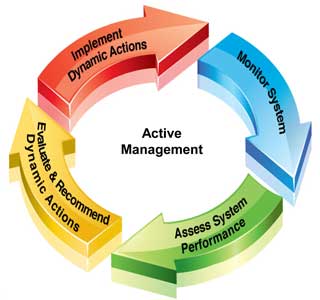
Slide 6
Moving Towards Active Management
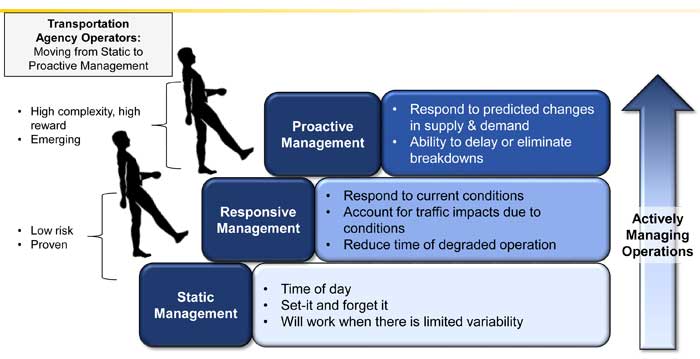
Slide 7
Moving Towards Active Management: Shoulder Use Example
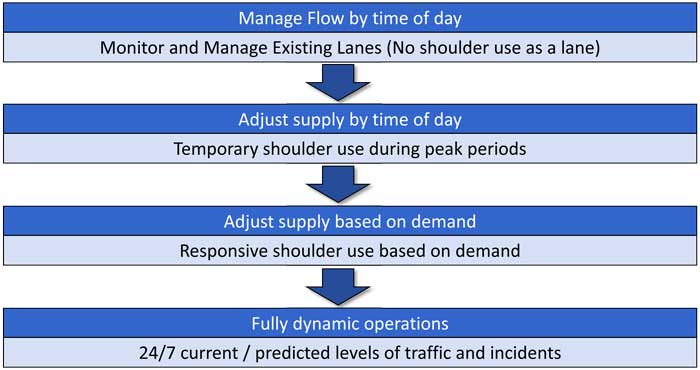
Slide 8
Goal of ATDM Concept
- Attain the capability to dynamically monitor, control, and influence travel, traffic, and facility demand of the entire transportation system and over a traveler's entire trip chain.
Slide 9
ATDM Throughout the Trip Chain
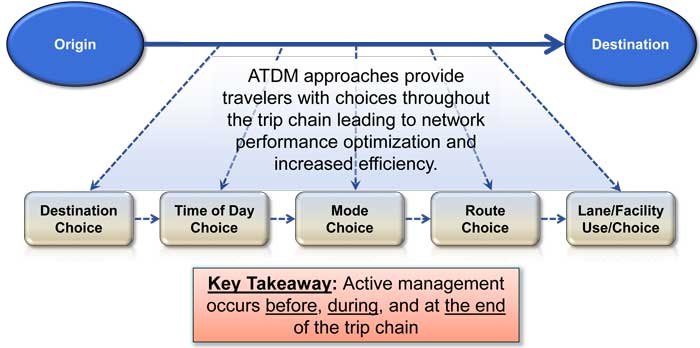
Slide 10
What does ATDM include?
Active Demand Management (ADM): A suite of strategies intended to reduce or redistribute travel demand to alternate modes or routes Incentivizes drivers by providing rewards for traveling during off peak hours with less traffic congestion.
Active Traffic Management (ATM): A suite of strategies that actively manage traffic on a facility.
Active Parking Management (APM): A suite of strategies designed to affect the demand on parking capacity.
| Examples of ATDM Implementation Strategies | |
| ADM | Comparative multi-modal travel times, dynamic ride-sharing, pricing, and incentive approaches. |
| ATM | Variable speed limits, dynamic shoulder use, queue warning, lane control. |
| APM | Parking pricing, real-time parking availability and reservation systems. |
Slide 11
The ACTIVE and INTEGRATED Continuum
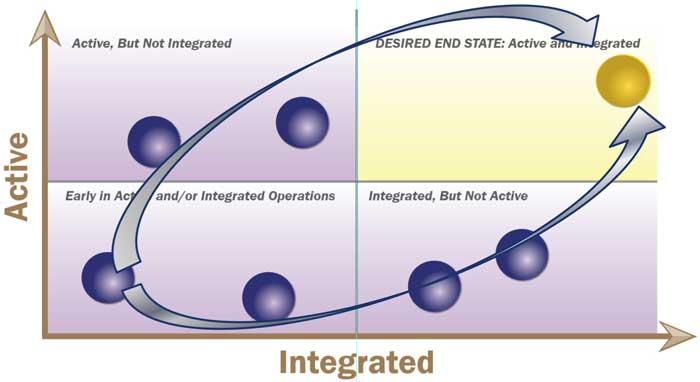
Slide 12
Integrated Corridor Management (ICM)
- ICM is the joint management of a transportation corridor as a complete system
- Load balancing
- Corridor operates at optimal performance, given the available capacity of each network
- ATDM needed to realize vision
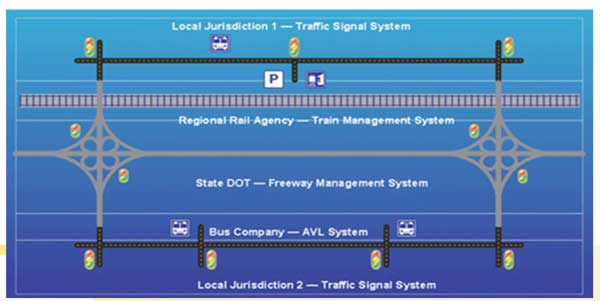
Slide 13
ATDM Relationship to ICM
- ICM is built on the fundamental concepts of load balancing.
- ATDM approaches need to be applied to realize the vision of ICM
Slide 14
Active Management in a Corridor
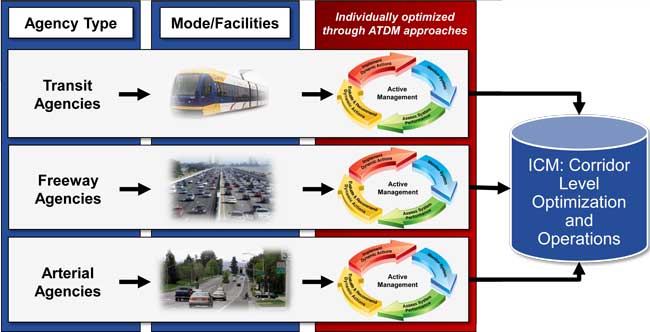
Slide 15
SECTION 2: TYPES OF ACTIVE MANAGEMENT DEPLOYMENTS
Slide 16
Scope Varies by Agency
Scale of Implementation
(site-specific to regional)
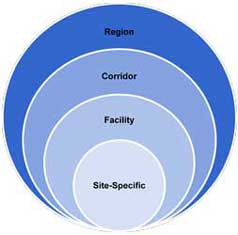
Types of Implementation
(ADM, ATM, APM or a combination)
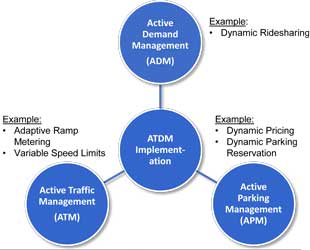
Slide 17
Examples of Active Management Strategies
| Active Demand Management | 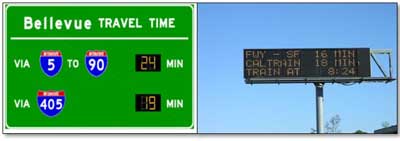 |
| Active Traffic Management |  |
| Active Parking Management | 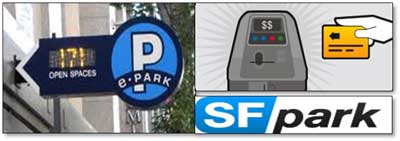 |
Slide 18
Active Demand Management Example: Mobile Applications
Innovative Mobile Traffic Apps:
- Goal: manage demand by influencing driver choice over a longer period of time
- How: Encourage behavior change through incentives (e.g., bigger rewards during off-peak travel)
- What: Real-time trip predictions, route mapping, voice navigation and pre-trip alerts
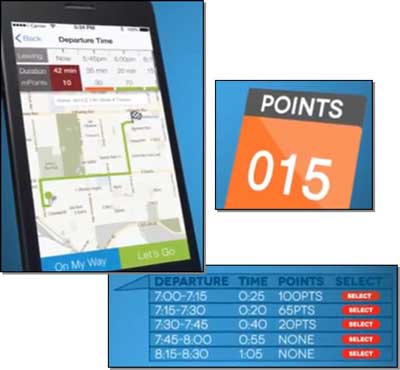
Source: http://www.metropia.com
Slide 19
Other ADM Deployments Include:
| Project | Location(s) | ADM Strategy(ies) | Active Technologies |
|---|---|---|---|
| I-10 Katy Expressway | Houston, TX | Dynamic pricing | Dynamic pricing of HOT lanes and incentives for transit and HOV usage |
| I-35W HOT Lanes | Minneapolis, MN | Dynamic pricing | Dynamic pricing of HOT lanes and incentives for transit and HOV usage |
| Congestion and Parking Relief Incentives (CAPRI) | Palo Alto, CA | Dynamic Parking Pricing | Award credits for avoiding peak parking hours. Credits used for random cash drawings of $2.00 – $50.00. Transponders used to detect when cars park. |
| Messaging Infrastructure for Travel Time Estimates to a Network of Signs (MITTENS) | San Francisco, CA | Predictive Traveler Information | Real-time highway and scheduled transit travel time displayed to induce in-route mode shift. |
| Predict-a-Trip | San Francisco, CA | Predictive Traveler Information | Predictive travel times using historical data to inform pre-trip travel decisions |
| I-55 Bus-on-Shoulder Demonstration | Chicago, IL | Hard shoulder running, temporary shoulder use | Roadway sensors, dynamic message signs |
Slide 20
Active Traffic Management Example:.VA I-66's Active Traffic Management System
NOVA's I-66 Active Traffic Management System:
- Intended to improve safety and incident management.
- Includes new sign gantries, shoulder and lane control signs, speed displays, incident and queue detection, and increased traffic camera coverage.
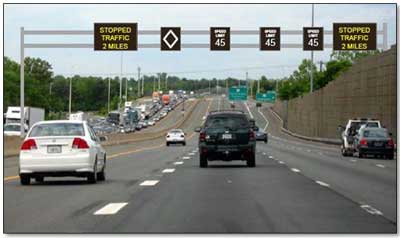
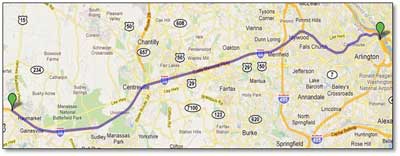
http://www.virginiadot.org/projects/northernvirginia/i-66_atms.asp
Slide 21
Other ATM Deployments Include:
| Project | Location(s) | ADM Strategy(ies) | Active Technologies |
|---|---|---|---|
| Adaptive ramp metering | Los Angeles, CA / Minneapolis, MN / Portland, OR / Houston, TX | Adaptive ramp metering | Roadway sensors, ramp meter signals, TMC algorithms, TMC control |
| Weather Responsive Speed Limits | Mobile County, AL / Flagstaff, AZ / Portland, ME / Truckee River, NV / Pittsburgh, PA / Knoxville, TN / Cheyenne, WY | Dynamic Speed Limits | Traffic management center (TMC) control, variable speed limit signs, atmospheric sensors, visibility sensors, pavement conditions sensors, dynamic message signs |
| I-5 Active Traffic Management | Seattle, WA | Dynamic lane use control, dynamic speed limits, queue warning, adaptive ramp metering | Roadway sensors, lane control/dynamic speed limit signals, dynamic message signs, TMC algorithms and control |
| I-70 West Rolling Speed Harmonization | Silverthorne, CO | Dynamic speed limits | Roadway sensors, ramp meters, law enforcement control |
| Variable Speed Limits on I-285 | Atlanta, GA | Dynamic speed limits | Roadway sensors, dynamic message signs, dynamic speed limit signals, TMC algorithms and control |
| Midtown in Motion | Manhattan, NY | Adaptive Traffic Signal Control | Roadway sensors, dynamic message signs, TMC algorithms and control |
Slide 22
Active Parking Management Example: San Francisco's SFpark System
SFpark:
- Periodically adjusts meter and garage pricing to match demand.
- Reduces demand in overused areas by encouraging drivers to park in underused areas and garages.
- Readjusts parking patterns throughout San Francisco to make parking easier to find.
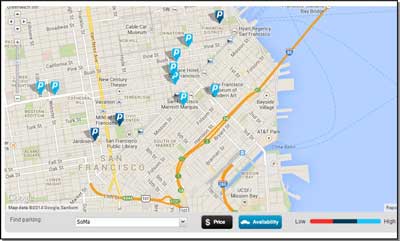

http://sfpark.org/about-the-project/
Slide 23
Other APM Deployments Include:
| Project | Location(s) | ADM Strategy(ies) | Active Technologies |
|---|---|---|---|
| PARK Smart | New York, NY | Dynamically priced parking | Demand-responsive pricing, upgraded smart meters |
| Congestion and Parking Relief Incentives (CAPRI) | Palo Alto, CA | Dynamically priced parking | RFID tags for system users, behavioral based pricing schemes |
| QuickPark | San Diego, CA | Dynamically priced parking, dynamic parking reservations | Parking space sensors, parking lots sensors, real-time parking availability information |
Slide 24
SECTION 3: FHWA'S ATDM PROGRAM
Slide 25
ATDM Program Goal
- Enable agencies to improve trip reliability, safety, and throughput of the surface transportation systems by dynamically managing and controlling travel and traffic demand, and available capacity, based on prevailing and anticipated conditions, using one or a combination of real-time operational strategies.
Slide 26
ATDM Program Objectives
- Increase awareness and understanding of ATDM.
- Develop, test, and evaluate strategies.
- Provide tools and methods for performance analyses.
- Provide tools and methods for benefit/cost analyses.
- Train agencies to deploy effective ATDM systems.
- Provide guidance to FHWA Division Offices.
Slide 27
Genesis of the ATDM Program (2009 – 2011)
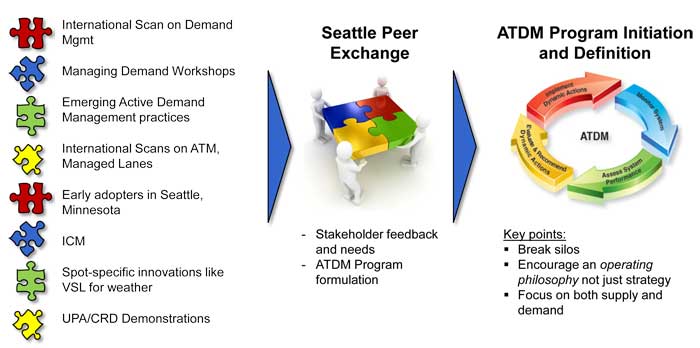
Slide 28
Initiation Phase (2011 – 2013)
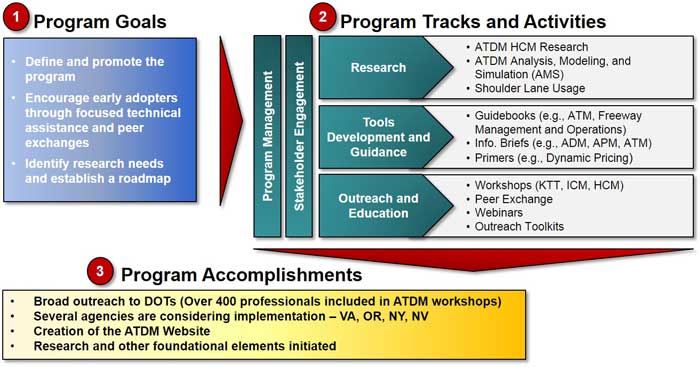
Slide 29
ATDM Program Components: .Research Completed
- ATDM Foundational Research
- ATDM Operational Concept and Program Development Workshops
- Analysis, Modeling, and Simulation (AMS) Concept of Operations, Capabilities Assessment, and Analysis Plan
- AMS Testbed Planning for ATDM and Dynamic Mobility Applications (DMA)
- ATDM HCM Analysis Methodology
- Guidance for Highway Capacity and Operational Analysis of ATDM
- Shoulder Lane Usage Analysis (Phase 1)
- HOV Managed Use Lane Pooled Fund Study
- Design and Operational Elements of Dynamic Shoulder Use
- Evaluation of ATM Lane Control Signage
- NCHRP Synthesis 447, ATM for Arterials
Slide 30
ATDM Program Components: Research Underway
- ATDM AMS Testbed Project
- Shoulder Research Projects
- ATM Traffic Control Devices Study
- ATDM Tools for Tactical and Strategic Decision Making for Operations
- Tools for Predicting Performance
- Tools for Tactical and Strategic Decision Making for Operations
- Traffic Management Capability Maturity
- Developing several maturity frameworks to enable advancing capabilities in Operations
- Trajectory Level Validation
- Collecting data and developing a methodology to enable Simulation tools to be validated based on detailed vehicle trajectory level data
- NCHRP 3-114, ATM Planning and Evaluation
- Developing a guide to planning and evaluating ATM for recurrent and non-recurrent conditions
Slide 31
ATDM Program Components: Guidance and References Available
Guidance, Primers, and Case Studies
- ATM: The Next Step in Congestion Management (FHWA-PL-07-012)
- Synthesis of ATM Experiences in Europe and the United States (FHWA-HOP-10-031)
- Operations Benefit/Cost Analysis Desk Reference (FHWA-HOP-12-028)
- Designing for Transportation Management and Operations: A Primer (FHWA-HOP-13-013)
- Guide for Highway Capacity and Operations Analysis of ATDM Strategies (FHWA-HOP-13-042)
- The ATDM Program: Lessons Learned (FHWA-HOP-13-018)
- Dynamic Parking Pricing Primer (FHWA-HOP-12-026)
- Ramp Metering Primer (FHWA-HOP-14-020)
- Integrating Demand Management into the Transportation Planning Process: A Desk Reference (FHWA-HOP-12-035)
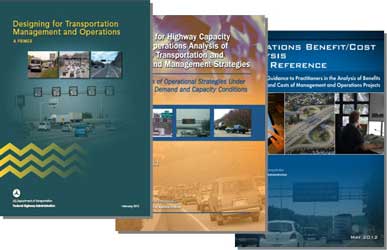
Slide 32
ATDM Program Components: Guidance and References Underway
- Freeway Management & Operations Handbook update
- Shoulder Guidance
- ATM Screening and Feasibility
- Active Demand Management Primer
- Traffic Management Capability Maturity Framework
- Capability Maturity Frameworks for Managing Non-Recurrent Congestion
- Dynamic Pricing Primer
Slide 33
ATDM Program Components: Outreach and Training
- Knowledge and Technology Transfer (KTT) Tools
- Informational Briefs
- Public Relations Resources Guide
- Regional Workshops/Peer Exchanges (19 total from 2011-present)
- NHI ATDM Webinar Series
- ATDM Executive Video
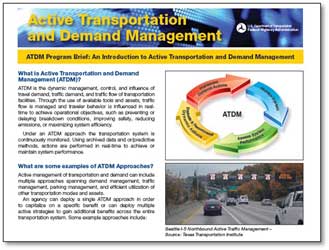
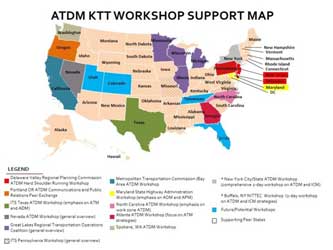
Slide 34
FHWA ATDM Website
- Clearinghouse for ATDM Knowledge and Technology Transfer
- Publications, Briefs, Videos, Webinars, Lessons Learned, External Resources, etc.
https://ops.fhwa.dot.gov/atdm/about/program.htm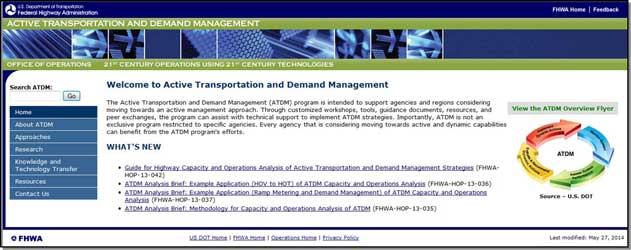
Slide 35
Summary
- ATDM represents next evolutionary step in Transportation Systems Management & Operations (TSM&O).
- Based on real time and predicted information and dynamic actions.
- Performance driven.
- Demand management much more prominent than historically in Operations.
- Several FHWA ATDM Program activities underway.
Slide 36
Contacts
Federal Highway Administration JIM HUNT Jim.Hunt@dot.gov (717) 221-4422 |
Federal Highway Administration JAMES COLYAR James.Colyar@dot.gov (360) 753-9408 |
Federal Highway Administration GREG JONES GregM.Jones@dot.gov (404) 562-3906 |